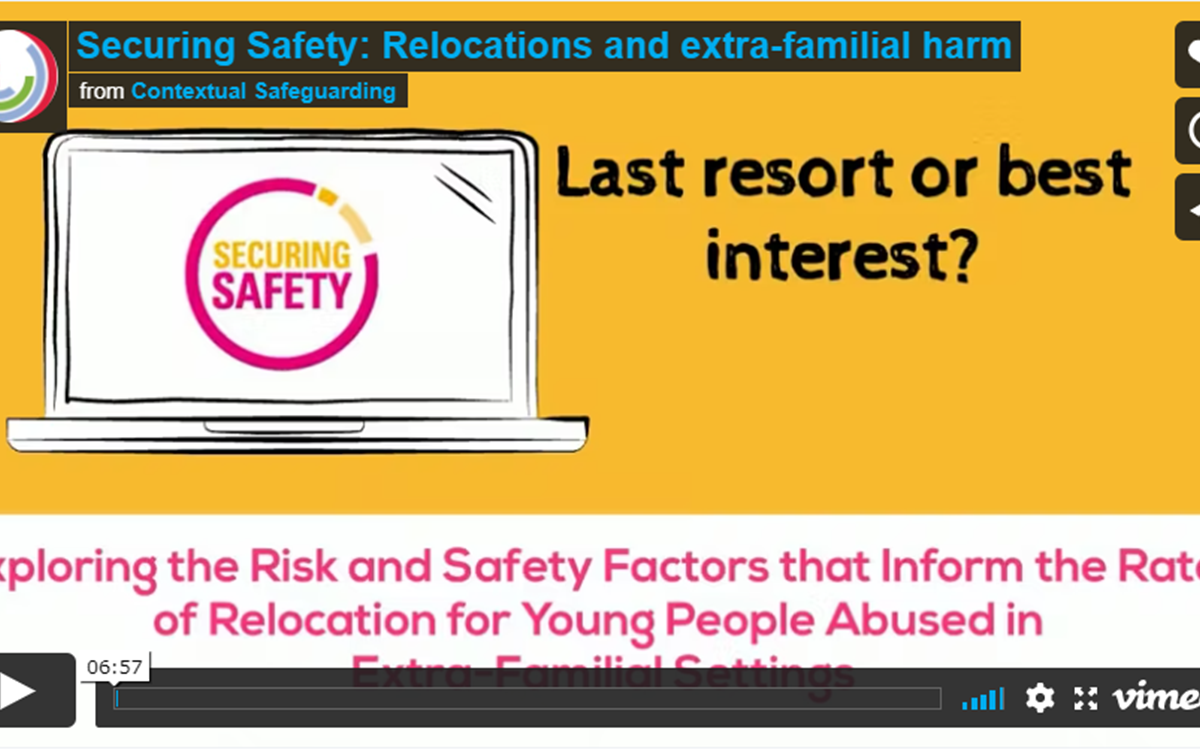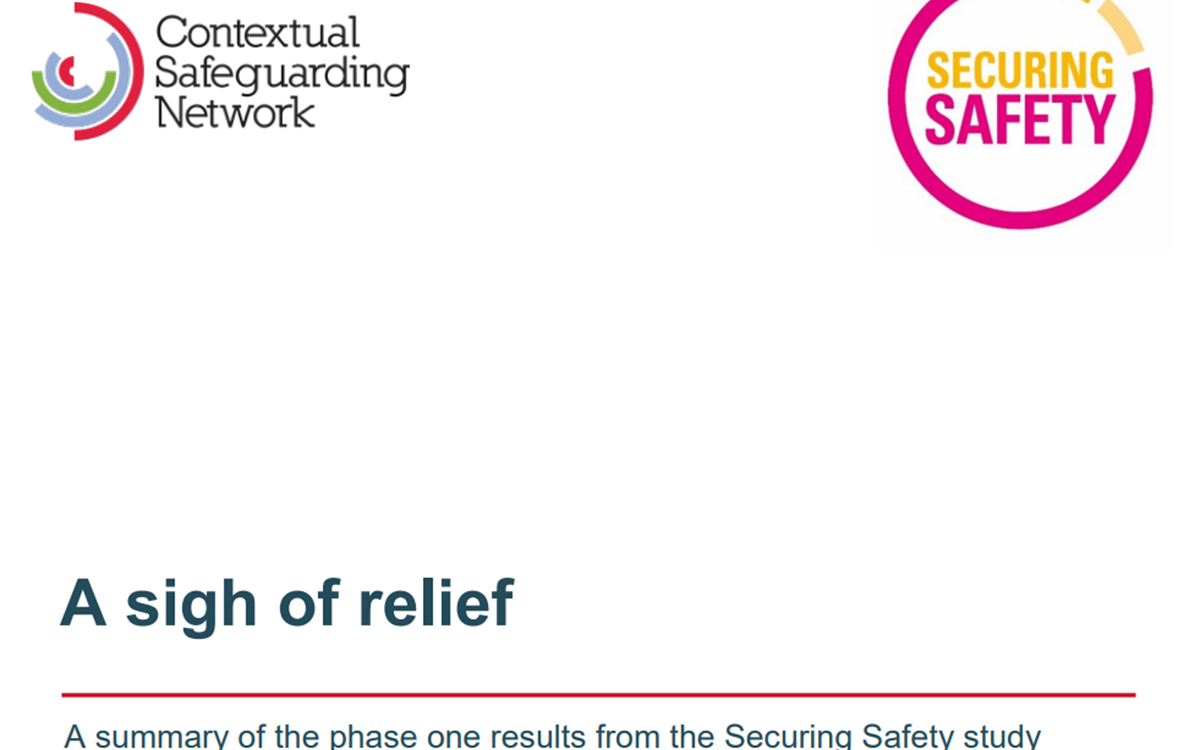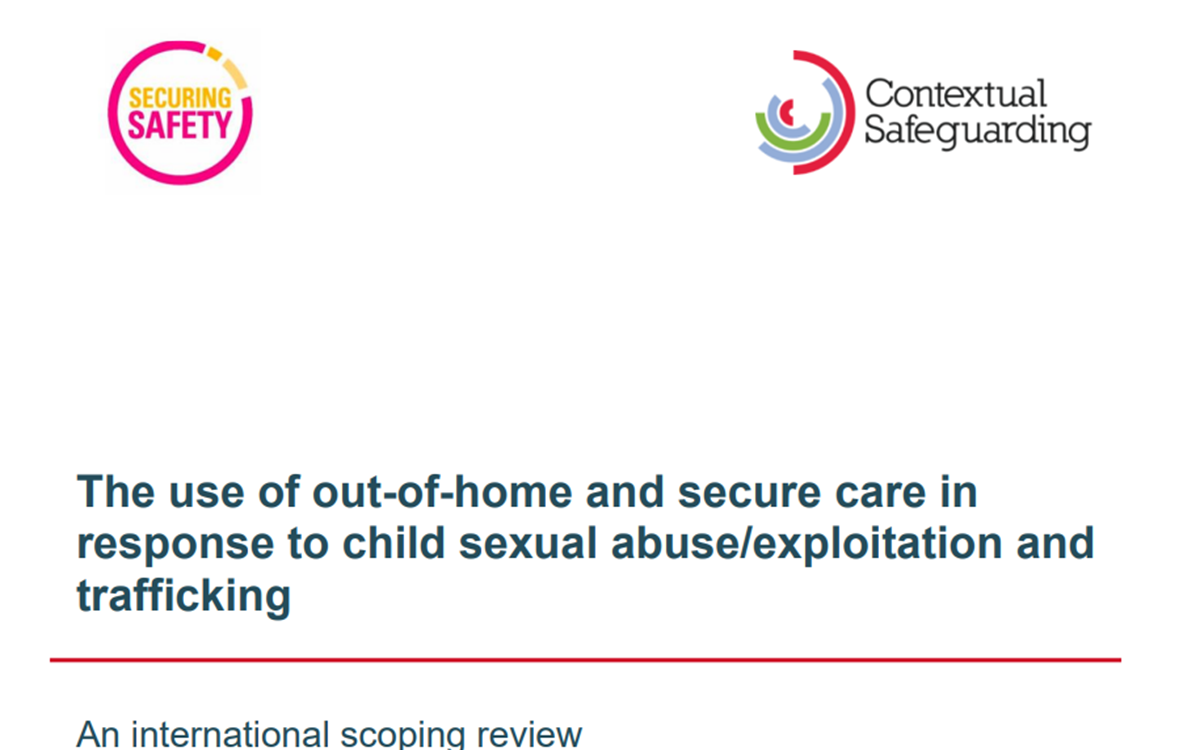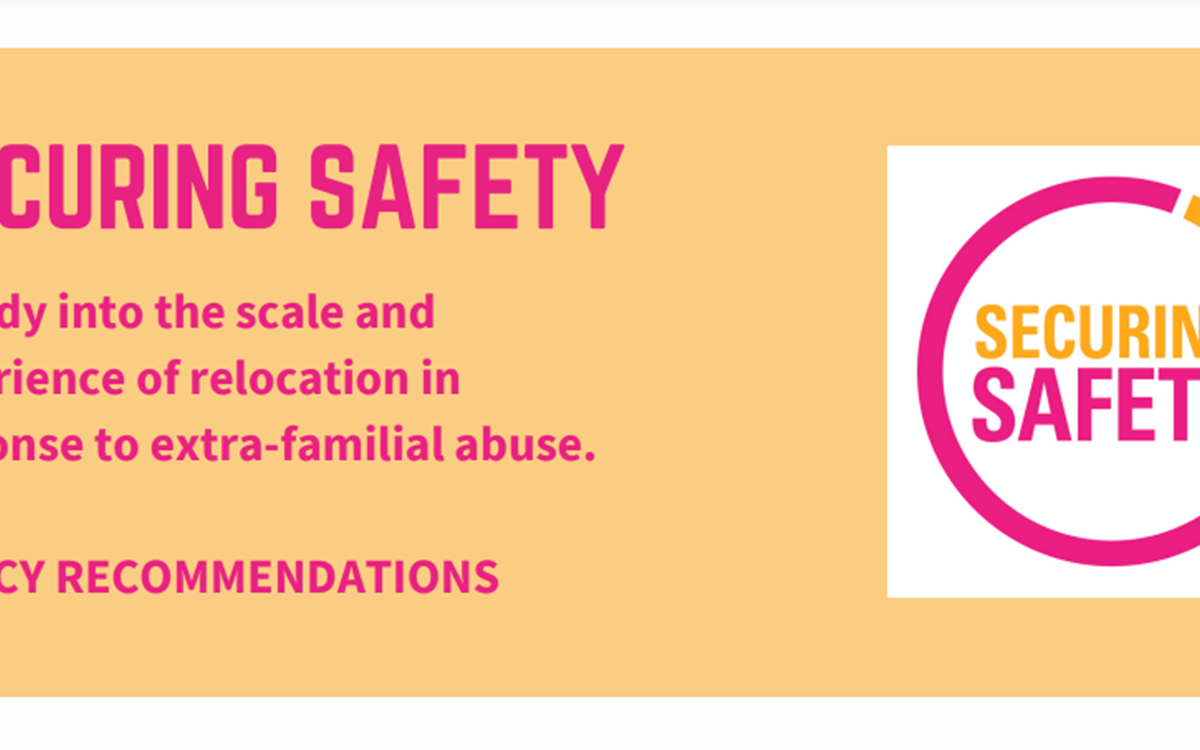Securing Safety: A study into the scale and experience of relocation in response to extra-familial abuse.
There is an absence of a consistent evidence base about the rate and cost of out of area placements as a response to extra-familial harm in adolescence. There is a further absence of an evidence base linking this cost with an impact assessment of these ‘relocations’, considering multidimensional experiences of safety. This research project aims to contribute to the national picture of the relocation of adolescents exposed to/at risk of extra familial harm (EFH), in order to enable local authorities maximise the effectiveness of their interventions on young people’s and family’s experience of safety.
The research ran from January 2019 to September 2021. Dr Lauren Wroe, Project Lead, spent 2 days a week working on Securing Safety with Delphine Peace, Research Assistant.
The research asked, what is:
– the scale of relocation across the UK. How often do local authorities relocate adolescents due to exposure to/risk of EFH and in what circumstances?
– the cost of relocation across the UK. What is the total spend for local authorities on relocating adolescents due to exposure to/risk of EFH?
– the impact of relocation on local authorities and on the safety of young people and families who are relocated due to exposure to/risk of EFH.
To support this understanding, the team used the following methods:
- Review of literature relating to extra-familial harm and relocations, the use of secure provision and experiences of managed moves.
- An online survey to 15 local authorities across England and Wales to capture the rate at which relocation is used as a response to EFH
- Semi-structured follow-up interviews with survey participants to contextualise the reported rate data
- Consultation with young people, parents and professionals on study design to capture the views of young people, families and services on the experience of relocations
- Interviews with finance managers and focus groups with social workers in three local authorities to approximate the cost of relocations
- Activity-based and semi-structured interviews to capture the views of young people, parents and professionals on the impact of relocation on experiences of safety
- Consultation with young people, parents and carers on dissemination strategies for policy makers, practitioners and families.
- Multi-media dissemination of study findings to influence policy and support practitioners and families to navigate relocations.
Principal investigator: Carlene Firmin
Funder: Samworth Foundation
Contact: lauren.wroe@beds.ac.uk (now lauren.e.wroe@durham.ac.uk)
Securing Safety phase one findings briefing: here and detailed methodology: here
Summary of phase two findings: here

“We’ve had long discussions about the pros and cons of moving”: briefing launched outlining the first year findings into our study on the rate, cost and impact of relocation as a response to extra-familial harm

Info-sheets for young people, parents and professionals


Last Resort or Best Interest? Exploring the Risk and Safety Factors That Inform the Rates of Relocation for Young People Abused in Extra-Familial Settings


A summary of the phase one results from the Securing Safety study




